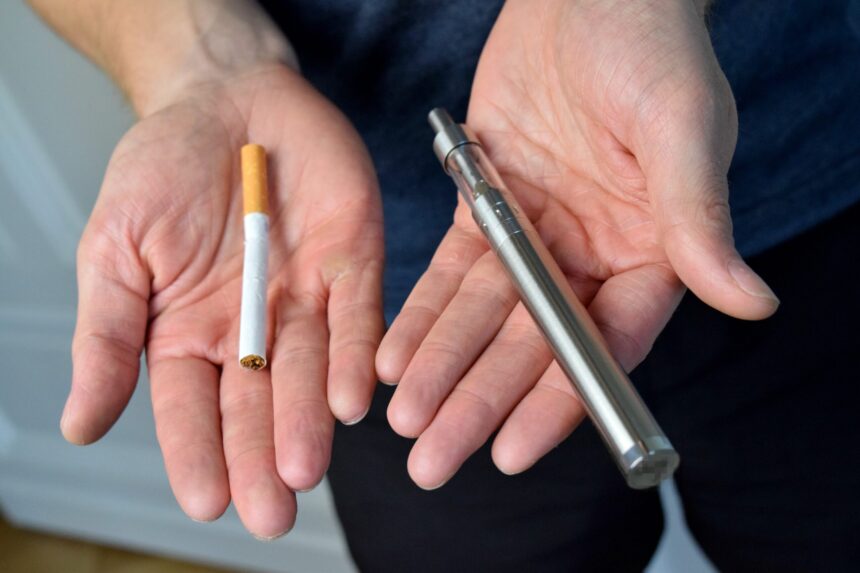ZK: What are some of the key provisions in the new Tobacco Products and Electronic Delivery Systems Control Bill?
LAY: The Bill is really comprehensive. It will make it illegal to smoke or vape in public places, including in shopping centres where smoking isn’t allowed. It will also restrict advertising and promotion of these products, ban online sales, and require graphic health warnings on packaging. The Bill will also regulate the sale of these products, including where they can be sold and who can sell them. It will also ban fruit-flavoured vapes, which are attractive to children.
ZK: How do heated tobacco products fit into the picture?
LAY: Heated tobacco products are a new and emerging trend in the tobacco industry. They are marketed as a safer alternative to traditional cigarettes, but they still contain harmful chemicals and can be addictive. The Bill will regulate these products in the same way as other tobacco products, including restricting where they can be used and how they can be marketed.
ZK: How important is harm reduction in tobacco control?
LAY: Harm reduction is an important concept in public health, but it needs to be evidence-based. The tobacco industry has co-opted the term to promote their products as safer alternatives, but the evidence shows that these products are not without risk. The focus should be on prevention and cessation, rather than harm reduction.
ZK: How can regulation keep pace with the changing tobacco landscape?
LAY: Regulation needs to be proactive and responsive to new and emerging trends in the tobacco industry. This means constantly monitoring the market and updating regulations as needed. It also means being vigilant against industry tactics to undermine regulation, such as funding their own research and influencing the media.
ZK: What can individuals do to protect themselves from the harms of tobacco products?
LAY: The best way to protect yourself from the harms of tobacco products is to not use them at all. If you are a smoker, quitting is the best thing you can do for your health. If you do use tobacco products, be aware of the risks and seek help to quit. And support strong tobacco control policies that protect everyone from the harms of tobacco.
The WHO report and the new Tobacco Bill are important steps in the fight against the tobacco epidemic. By regulating new products and keeping pace with industry tactics, we can protect public health and save lives.
The number of smokers in South Africa has been on the rise since 2018, with a significant increase from 9.5 million to 14.9 million in 2024. This trend raises concerns about the health implications and the impact on public health.
In a recent interview, ZK inquired about the smoking products that tobacco companies are promoting in South Africa. LAY highlighted the growing popularity of vapes, with a notable increase from 4.1% to 7.7% among individuals aged 16 to 34. Additionally, heated-tobacco products (HTPs) have seen a rise in usage, as monitored since 2021, based on data from Nielsen.
HTPs differ from conventional cigarettes in their mechanism of delivering nicotine. While traditional cigarettes burn tobacco, HTPs heat a stick filled with tobacco leaves using a battery-powered coil. This process aims to reduce exposure to harmful chemicals present in cigarette smoke, although the overall impact on health remains uncertain.
Tobacco companies promote HTPs as harm reduction tools, emphasizing the potential to lower toxin exposure compared to traditional cigarettes. However, the evidence supporting this claim is limited, and the long-term health effects of HTPs are still unknown. Despite industry assertions that these products target smokers looking to quit, there is no conclusive evidence of a reduction in smoking rates since the introduction of e-cigarettes in 2010.
Contrary to the industry’s narrative, there is no significant shift from cigarettes to alternative smoking products. Some individuals continue to use both cigarettes and HTPs or vapes simultaneously. Surprisingly, a growing number of non-smokers, particularly in the 16 to 34 age group, are using e-cigarettes, indicating a concerning trend of new users being introduced to nicotine products.
The rise in smoking prevalence and the adoption of alternative tobacco products underscore the need for effective tobacco control measures and public health campaigns to address the growing tobacco epidemic in South Africa. It is crucial to monitor and regulate the marketing and availability of these products to protect public health and reduce the burden of tobacco-related diseases.
This article was originally produced by the Bhekisisa Centre for Health Journalism, highlighting the ongoing efforts to raise awareness and advocate for health issues in South Africa. Stay informed by subscribing to their newsletter for the latest updates on health-related news and developments. The world of fashion is constantly evolving, with new trends and styles emerging every season. One trend that has been gaining popularity in recent years is sustainable fashion. This movement focuses on creating clothing that is not only stylish and fashionable, but also environmentally friendly and ethical.
Sustainable fashion is all about reducing the environmental impact of the fashion industry. This includes using eco-friendly materials, such as organic cotton, hemp, and recycled fabrics, as well as minimizing waste in the production process. Many sustainable fashion brands also focus on fair labor practices, ensuring that workers are paid fair wages and have safe working conditions.
One of the key principles of sustainable fashion is longevity. This means creating clothing that is durable and long-lasting, rather than disposable and quickly thrown away. By investing in high-quality, timeless pieces that can be worn for years to come, consumers can reduce their overall carbon footprint and help combat the fast fashion industry.
Another important aspect of sustainable fashion is transparency. Many brands are now making an effort to be more transparent about their supply chains, providing information on where their materials are sourced and how their clothing is produced. This allows consumers to make more informed choices about the brands they support and encourages greater accountability within the industry.
In addition to being better for the environment, sustainable fashion can also be a more ethical choice for consumers. By supporting brands that prioritize fair labor practices and ethical production methods, consumers can help ensure that garment workers are treated fairly and with respect.
There are many ways that consumers can support sustainable fashion. One simple way is to buy clothing from brands that prioritize sustainability and ethical practices. This can include shopping from local, independent designers, shopping second-hand, or investing in high-quality, sustainable pieces that will last for years.
Consumers can also make a difference by taking care of their clothing and practicing mindful consumption. This can include washing clothes on a gentle cycle, air drying instead of using a dryer, and repairing clothing when it gets damaged rather than throwing it away.
Overall, sustainable fashion is an important movement that is gaining momentum in the fashion industry. By supporting brands that prioritize sustainability and ethical practices, consumers can help reduce the environmental impact of the fashion industry and support fair labor practices. With more and more brands embracing sustainable fashion, it is easier than ever for consumers to make a positive impact through their fashion choices.








